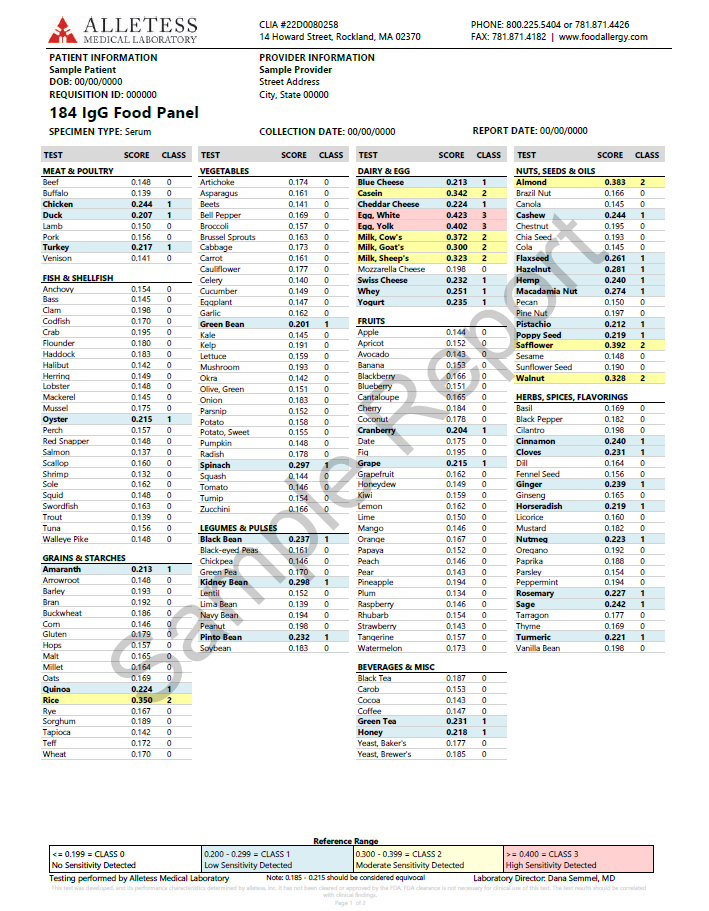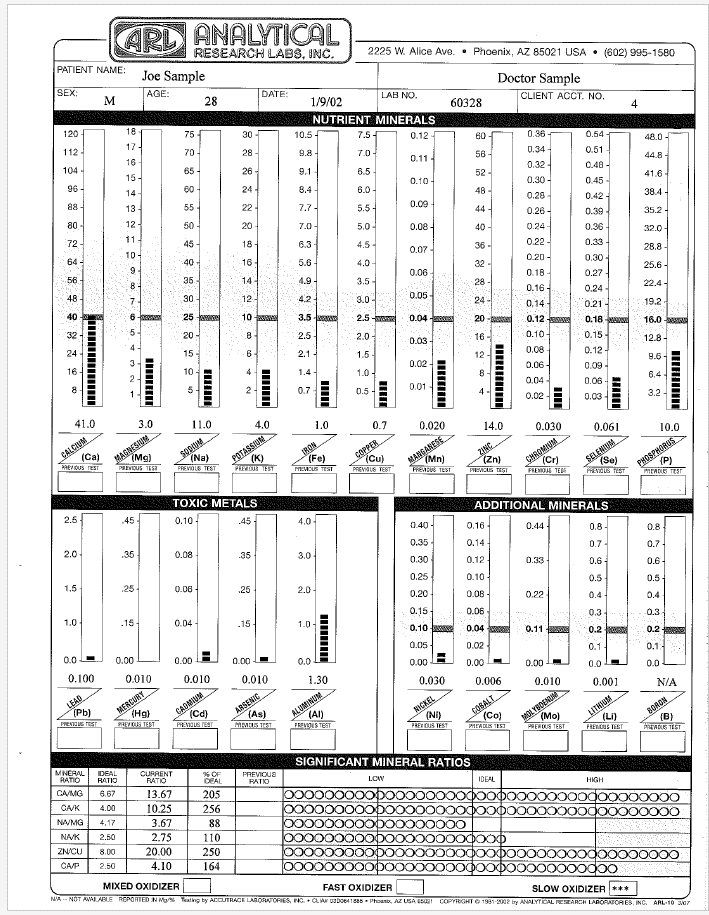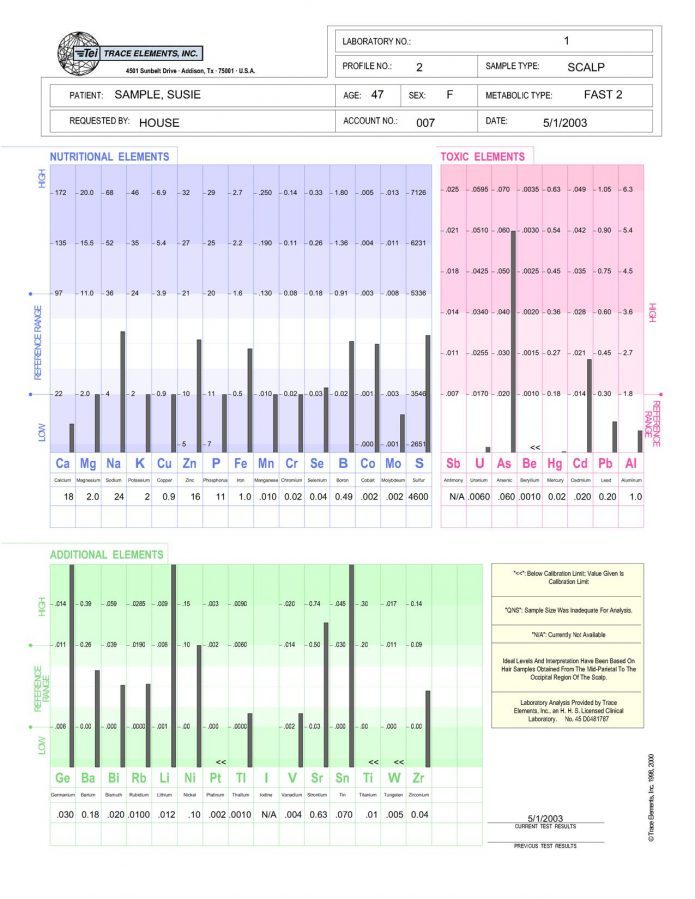
Table of Contents
Food Intolerance vs. Food Allergy
Many people mistake food intolerance for food allergies and vice versa. However, there are many key differences between the two that I want to share with you.
These conditions target two different areas of the body. A food allergy is primarily an immune system response, or an IgE response, as for example, an allergy to peanuts. And, the response is quite immediate. While a food intolerance targets the digestive system, or as an example, an IgM, IgG, or IgA response.
If you have a food allergy, your immune system builds up antibodies to fight an ingredient or compound in the food because your body thinks it is a harmful, foreign invader. As a result, you may experience symptoms such as hives, nausea, chest pain, shortness of breath, or swelling. That is why an epi-pen is necessary to have on hand for an immediate IgE response.
On the other hand, if your condition involves a food intolerance, that’s an adverse reaction to food that starts in the digestive tract. Food intolerance interferes with your ability to break down food in a way that your body can not absorb properly. If you suffer from a certain food sensitivity, or intolerance, you will likely experience common symptoms of an upset stomach like nausea, bloating, diarrhea, vomiting, or heartburn.
A medical condition that is frequently disregarded but can result in a wide range of symptoms is food intolerance. It targets not only other systems but also your digestive system. Patients with food intolerance have trouble digesting or letting your stomach break down certain foods properly. It may also manifest as sensitivity which irritates your stomach and can cause pain, as well as other unpleasant issues, like bloating and gas.
Do You Have Food Intolerances?

With food intolerances it takes a little patience and finesse because it is not an immediate reaction. There are multiple symptoms to look out for and not all of them appear simultaneously. Some patients might observe an adverse reaction to the food they ate within a few hours, while other people might not feel them for up to 48 hours. Plus, these symptoms can last anywhere from a few hours to a few days. We know that sounds extremely vague, but that’s why we are here to lay out the symptoms you should watch for and how to interpret them. So, let’s break it down – be on the lookout for:
- Bloating
- Cough
- Headaches or migraines
- Nausea
- Vomiting
- Diarrhea
- Heartburn
- Rash
Understanding and Overcoming Food Intolerance
Once you know everything there is to know about what is and what isn’t food intolerance, it’s time to start taking steps to control your diet. One way is to eliminate one food at a time that you think is bothering you for 4 days. It takes 4 days for the food to be completely eliminated from your body. Do this with as many foods as you think you may have a food intolerance. This may take time, but the results are well worth it.
To identify which kind of food intolerance you’re dealing with, the symptoms can take up to two days to appear. So it’s a bit challenging to figure out which food could be the culprit.
Fortunately for you there’s an easier way to narrow down the choices and figure out the problem by doing a food test. You may wish to use one of the Alletess food profiles or another test at the bottom of this page to quickly help you identify any food culprits. With the right tools and strategies, you can learn to effectively manage your food intolerance and fully enjoy your meals again.
FAQ
What are the 3 most common food intolerances?
Lactose intolerance, gluten intolerance, and fructose intolerance.
What are the signs of food intolerance?
Common signs of food intolerance include bloating, gas, diarrhea, constipation, abdominal pain, headaches, and skin rashes.
How to fix food intolerance?
Eliminate the suspected trigger foods from your diet, keep a food diary, and consult a healthcare professional for proper diagnosis and treatment.
Why am I suddenly developing food intolerances?
Food intolerances can develop due to various factors, including changes in gut health, alterations in the microbiome, aging, stress, or exposure to new foods. It’s advisable to consult a healthcare professional for personalized advice.
Products
At Home Tests
-
←→

Alletess Food Allergy Sensitivity Test
$269.00$223.00Food sensitivities may be causing many of your health issues. Test now with this convenient at home test; no lab visit required.Alletess Food Allergy Sensitivity Test
At Home Health Tests, Allergy Tests, Blood Spot Tests, Allergy Solutions, Lung Solutions, Gastrointestinal Solutions$269.00 $223.00Successfully Added to your Shopping CartAdding to Cart... -
←→

UCARI Intolerance Test Kit
$99.99$88.00Test for 1500+ possible intolerances and nutritional imbalances- Buy 2 at $85.00
UCARI Intolerance Test Kit
At Home Health Tests, Hair Tests, Allergy Tests, Nutritional Tests, Environmental Pollutants Tests, Mycotoxin Molds Tests, Allergy Solutions, Lung Solutions, Gastrointestinal Solutions, Immune System Tests, Candida Solutions$99.99 $88.00Successfully Added to your Shopping CartAdding to Cart... -
←→

Analytical Research Labs Hair Test
$179.00$149.00Providing a mineral blueprint of one’s biochemistry, an Analytical Research Labs Hair Minerals Test reports levels of minerals and heavy metals in your body giving possible reasons for your symptoms, with suggestions for nutritional supplements and diet changes. Hair tissue mineral analysis can provide pertinent information about balanced nutrition, one’s metabolic rate, energy levels, sugar and carbohydrate tolerance, stage of stress, immune system and glandular activity.- Buy 2 at $145.00
Analytical Research Labs Hair Test
$179.00 $149.00Successfully Added to your Shopping CartAdding to Cart... -
←→

Trace Elements Nutritional Deficiencies Hair Test
Nutritional Tests, At Home Health Tests, Toxic Metals Tests, Hair Tests, Autism Tests, Immune System Tests$188.00 $148.00Successfully Added to your Shopping CartAdding to Cart...
Nutritional Supplements
-
←→

Calcium Aspartate
Supplements, Mineral Supplements, Nerve Damage Solutions, Bone Solutions, Muscle Solutions, Allergy Solutions$11.70Successfully Added to your Shopping CartAdding to Cart... -
←→

Magnesium Orotate
Supplements, Mineral Supplements, Heart Solutions, Immune System Solutions, Gastrointestinal Solutions, Allergy Solutions$25.10Successfully Added to your Shopping CartAdding to Cart... -
←→

Zinc Arginate with Aspartate
Supplements, Mineral Supplements, Skin Solutions, Immune System Solutions, Amino Acids Supplements, Allergy Solutions$8.10Successfully Added to your Shopping CartAdding to Cart... -
←→

Adrena Pan-C
$17.50Combat stress and anxiety with the power of science. This unique blend includes adrenal and spleen nucleic acids as well as key components of vitamin C and coenzymes crucial for adrenal function. Adrena Pan-C supports your body's natural adrenal response. It's especially beneficial for those who get tired when stressed, or who have poor dietary habits.
